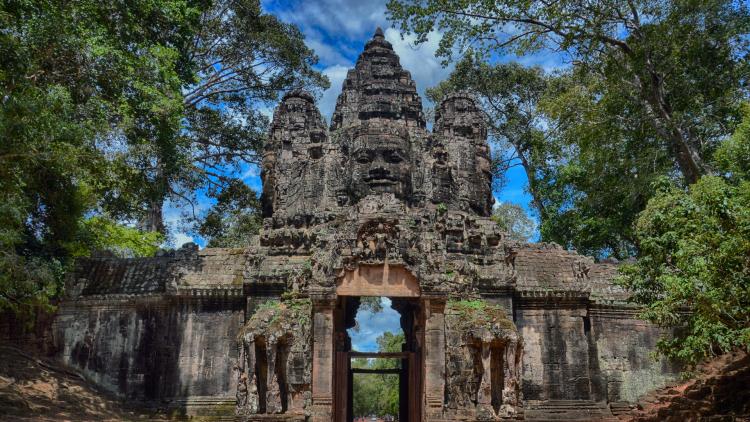Outsiders in Medieval Middle Eastern Societies: Minorities, Social Outcasts and Foreigners

Key information
- Status
- Module not running
- Module code
- 15PHIH006
- FHEQ Level
- 7
- Credits
- 15
- Department
- Department of History
Module overview
The rule of Turkish and Kurdish dynasties, such as the Saljuks, Ayyubids and Mamluks, the establishment of the Latin European Crusader states and the existence of marginal groups within the own society raise the question of their interaction with mainstream Arab Muslim society in the medieval period. The course examines the different forms of this interaction (cultural mediation, interchange, and conflict) in the Eastern Mediterranean up to c. 1500 by focusing on the issue of ‘insiders’ and ‘outsiders’.
After an introduction of the main theoretical concepts we will consider themes such as non-Muslim groups, social outcasts, foreign rulers and the various levels of interaction with the Crusaders.
Objectives and learning outcomes of the module
At the end of the course the students:
- will have gained insights into the concepts of insiders/outsiders,
- will have acquired a strong understanding of how medieval Middle Eastern society constructed the otherness of internal and external groups,
- will have knowledge of the pertinent sources,
- will be able to critically assess prevailing approaches to the subjects covered
- and will be able to write a competent well-structured essay making substantial use of primary materials.
The objectives of this course are visible in the structure of the sessions. Each session introduces a specific ‘outsider’ group (e. g. slaves, foreign rulers or Crusaders) and focuses at the same time on a particular kind of source material that is relevant to the study of this group (e. g. poetry, inscriptions or endowment records). Two introductory sessions are devoted to the conceptual framework of the course.
Method of assessment
Essay of 3,000 words worth 80% of the final mark, Reaction paper/book review of 1,000 words worth 20% of the final mark
Suggested reading
- Abulafia, D. 1996. The Role of Trade in Muslim-Christian Contact during the Middle Ages , in: D. Agius/R. Hitchcock (eds.): The Arab Influence in Medieval Europe, Reading, pp. 1-24.
- Ayalon, D. 1988. Outsiders in the lands of Islam: Mamluks, Mongols and Eunuchs , London.
- al-Azmeh, A. 1992. Barbarians in Arab Eyes , in: Past and Present 134, pp. 3-18.
- Dajani-Shakeel, H. 1993. Diplomatic Relations Between Muslim and Frankish Rulers , 1097-1153 AD, in: M. Shatzmiller (ed.): Crusaders and Muslims in Twelfth-Century Syria, Leiden, pp. 190-215.
- Dols, M. 1992. Majnun: The Madman in the Medieval Islamic World. (ed. by D. E. Immisch). Oxford.
- Ellenblum, R. 1998. Frankish Rural Settlement in the Latin Kingdom of Jerusalem , Cambridge.
- el-Rouayheb, Kh. 2005. Before Homosexuality in the Arabo-Islamic World , 1500-1800. Chicago/London.
- Ephrat, D./M. D. Kabha. 2003. Muslim Reaction to the Frankish Presence in Bilad al-Sham: Intensifying Religious Fidelity Within the Masses , in: Al-Masaq: Islam and the Medieval Mediterranean 15/1, pp. 47-58.
- Grehan, J. 2003. Street Violence and Social Imagination in Late-Mamluk and Ottoman Damascus (ca. 1500-1800) , in: International Journal of Middle East Studies 35, pp. 215-36.
- Guthrie, S. 1995. Arab Social Life in the Middle Ages. An Illustrated Study . London.
- Haddad, W. 1983. The Crusaders Through Muslim Eyes , in: The Muslim World 73, pp. 234-252.
- Hillenbrand, C. 1999. The Crusades: Islamic Perspectives , Edinburgh.
- Hirschler, K. 2007. Riten der Gewalt: Protest und Aufruhr in Kairo und Damaskus (7./13. bis 10./16. Jahrhundert), in: S. Conermann/S. v. Hees (eds.): Islamwissenschaft als Kulturwissenschaft, Schenefeld, pp. 205-233.
- Holt, P.M. 1995. Early Mamluk diplomacy (1260-1290): treaties of Baybars and Qalawun with Christian rulers , Leiden.
- Jubb, M. 2005. The Crusaders’ Perceptions of Their Opponents , in: H. Nicholson (ed.): Palgrave Advances in the Crusades, London, pp. 225-244.
- Kahle, P. (ed.). 1992. Three Shadow Plays by Muhammad Ibn Daniyal [prepared for publication by D. Hopwood and M. Badawi]. Cambridge.
- Karamustafa, A. 1994. God’s Unruly Friends: Dervish Groups in the Islamic Later Middle Period . Salt Lake City.
- Kedar, B.Z. 1990. The Subjected Muslims of the Frankish Levant, in: J.M. Powell (ed.): Muslims Under Latin Rule 100-1300, Princeton, pp. 134-174.
- Lewis, B. 1990. Race and slavery in the Middle East: an historical enquiry , New York.
- Pahlitzsch, J./Korn, L. (eds.). 2004. Governing the Holy City: the interaction of social groups in Jerusalem between the Fatimid and the Ottoman period , Wiesbaden.
- Petry, C. F. 2001. Disruptive ‚Others’ as depicted in chronicles of the Late Mamluk Period , in: H. Kennedy (ed.). The historiography of Islamic Egypt (C. 950-1800), Leiden.
- Rabbat, Nasser. 2001. Representing the Mamluks in Mamluk historical writing , in: Hugh Kennedy (ed.). The historiography of Islamic Egypt (C. 950-1800), Leiden: Brill.
- Sabra, A. 2000. Poverty and Charity in Medieval Islam , Mamluk Egypt, 1250-1517, Cambridge.
- Shoshan, B. 1993. Popular Culture in Medieval Cairo, Cambridge.
- Wild, S. 1975. Jugglers and Fraudulent Sufis, in: F. Rundgren (ed.): Proceedings of the VIth Congress of Arabic and Islamic Studies. Visby 13-16 August, Stockholm 17-19 August 1972. Stockholm/Leiden, pp. 58-63.
Disclaimer
Important notice regarding changes to programmes and modules
